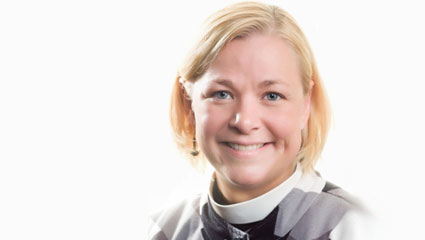It was tempting to sentimentalize the whole thing because it was so beautiful, so poignant.
It was a bright spring day, sunny and warm. I was presiding at the funeral service for a woman in her nineties who had lived long enough to see not just her great-grandchildren but great-great-grandchildren. She had died peacefully in her sleep, her daughter at her side. After a memorial service in her beloved church down south, she returned home to Wisconsin to be buried next to her husband. Her children and grandchildren spoke of the faith she had lived and passed on to them. If one has to die, it’s a pretty good way to go.
One of her great-great-grandkids, a seven year old boy, was an attentive, inquisitive participant in the funeral proceedings. He watched me put my robes on in the office of the funeral home. When I dropped a small piece of paper during the hymn, he ran to pick it up and hand it to me. He watched the funeral directors reverently close the casket. As they tightened the lid, he turned to his grandfather and said, “That must be so the bugs don’t get in.” He put his hand on the casket handle as they slid it into the hearse, and then he peeked in after it.
During the committal prayers, he and I stood at either end of the casket as we committed her body to the ground, earth to earth, ashes to ashes, and dust to dust. After the committal, he stuck around to watch the cemetery workers do their duties, and eagerly took a flower from the casket. He waved good-bye to his great-great-grandma as we got back into the cars and drove away.
So it was temping to sentimentalize it all−this young boy, full of life, learning about death on a beautiful day from a safe distance. But, in reality, this kid is already well acquainted with illness, fear, and death. He has a rare genetic condition that means he will require a lung transplant sooner rather than later. His infant sister, suffering from the same condition, has already received a new liver. He has explored the hallways of Children’s Hospital, is familiar with IV’s and hospital beds, and knows what surgery feels like. He knows that often old people die, and sometimes young people do, too. And so, we all watched his behavior not with sentimentality but with the weight of reality and sadness.
None of us learns about death from a safe distance. The truth is that we are all fragile, and that’s probably why we try so hard to deny death’s power. We glorify youth and beauty and isolate those who are old or sick. Even churches find ways to avoid acknowledging death. This denial is one of the many ways that we ignore our neighbor. But, just as destructive, it’s a way of ignoring ourselves and our broken humanity. And it’s certainly a way of ignoring God. It’s impossible to know what this boy really understands about his illness or what it means to die. (Then again, I’m not sure how much I understand about his illness or what it means to die.) But there is strength in the fact that already, at such a young age, he is facing his own mortality as he faces the mortality of others. In that respect, he is light years ahead of most of us.
The Word of God is not in denial about death. The Bible tells stories of illness, betrayal, abuse, violence, and the deaths that result. The Incarnate Word of God, Jesus of Nazareth, experienced these things firsthand. And so we are called to make the preached Word of God true to that reality. Although it is usually closer than we would like, death is not something we can hide or deny. To do that would mean that we were afraid or despairing.
In our preaching, we speak the truth about death because it is in truth that we find our hope for new life. When we do that, we set our people free to see things as they are and to see themselves as they are. We can see the beauty in a day when we bury someone. We can face illness with courage and hope. We can watch a young boy play with his sister and see it for what it is, not sentiment but gift.

